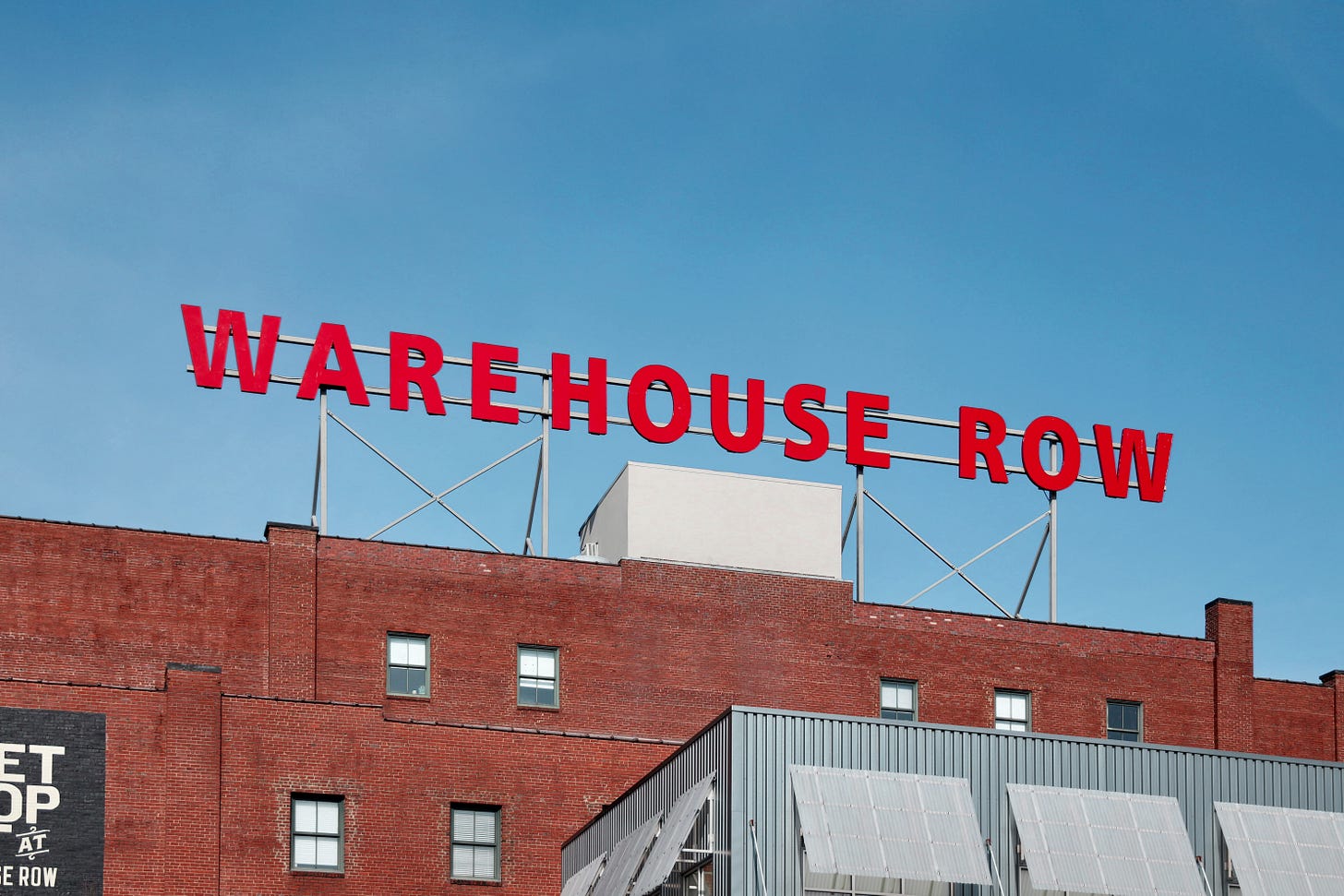In the Portland, Maine industrial opportunity zone, a homeless shelter is planned as a residence in a business but businesses in residence are not permitted.
 |
| Stephanie Klepacki Unsplash |
The Homeless Tax Shelter
The homeless shelter proposed by the Portland, Maine city council is advanced by developers taking advantage of 2017 opportunity zone tax advantages. There are multiple social issues entangled in the political web of the proposed homeless shelter, starting with why is a homeless shelter being proposed in an industrial zone?
To all appearances, the Portland, Maine homeless shelter will be financed using opportunity zone tax advantages for investors. an assumption based on the location of the planned homeless shelter in an opportunity zone and that the developers charged with the financing are intimately connected with the CEI-Boulos Opportunity Fund, an award-winning social impact leader in opportunity zone financing that weaves non-profit and for-profit streams of concentrated wealth into a greater concentration of wealth.
 |
| Sergio Gonzalez Unsplash |
As part of the home business culture, my question is “why is a homeless shelter located in an industrial zone, while ordinances designed to limit the growth of businesses in a home, such as those put into place in Boothbay, Maine, encourage the pecuniary activity of a resident home business to relocate to a designated industrial zone where residency is prohibited?
Paragraphs in Boothbay Town Report of 2015, are copied word for word, from the 2013 Act, Industrial Partnerships.
Chapter 39: MAINE INDUSTRY PARTNERSHIPS[ 2013, c. 368, Pt. FFFFF, §1 (NEW) .]
Action B.2-4. Explore creating a small business assistance program that would help growing businesses, including home businesses and home occupations, with financing and with locating in appropriate commercial/industrial districts when appropriate.
The only explanation that I have been given for ordinances designed to relocate home-businesses away from the home, is that if one has a business in the home, cars related to the business activity will park in the driveway. When this explanation is given, it is stated, in a manner of gaslighting, as if a car parked in a driveway for a business purpose rather than any other purpose is commonly accepted as an anti-social act.
As one who was raised in a business in the home in East Boothbay, cars parked in the driveway and identifying signage were the only external effect related to our business that differentiated our home from others in the neighborhood, and even that isn’t entirely true as large families and property owners that hire maintenance help, at times have as many cars parked in their driveways as we did.
If cars parked in a driveway are the problem, the ordinance should limit the number of cars permitted to be parked on any location for any reason but instead, the ordinances limit the growth of businesses in a home, lest they become too successful, causing cars to park in their driveways, unlike large businesses that are permitted to build large parking lots in the local watershed.
Support this blog by adding to your Andersen Design Vintage Collection!
For much of the year, during the off-season, the cars parked in the driveway belonged to employees working for our business, but since our business is small, there were not enough employees in number to qualify as “job creation” to local economic development leaders, and so employees were counted as cars. not a workforce, but as cars that needed to be regulated.
Today such local ordinances are rapidly becoming out of sync with the times in reverse proportion to the rapid growth of the Great Resignation and remote working.
By reading many articles written to explain the Great Resignation, it is apparent that they fall into two categories, those written with reliance on data-driven reports and those written by individual voices within the workforce. The primary difference between the two approaches is the recognition that the Great Resignation is a response to a hierarchical corporate culture that is detrimental to the human spirit, self-esteem, and well-being.
On the individual scale, the cause is seen that is apparently invisible to corporate management and data analysts. It’s about humanism. It’s about how people treat people as conditioned by the fabric of culture in which many individuals are entwined with each other.
In the Portland, Maine homeless solution, homeless people have no say in what and where a shelter should be because the shelter isn’t about helping the homeless. It is about real estate, gentrification, and tax shelters. Those are the forces that won the vote.
A homeless person can live in an industrial zone but a home business cannot be located in an industrial zone, without losing the home, since only homeless people can live in industrial zones in the social order created by and for what I call the public-private for-profit nonprofit industrial complex.
How are the homeless and home businesses related? They have in common that both exist outside the system, the homeless because they do not have the wealth to buy a voting voice, and businesses in a home because they are alternative and independent cultural organizations, remnants of a former time before the complex took over everything.
The complex exists for the singular purpose of concentrating wealth. Concentrated wealth creates all-encompassing corporate networks and hierarchical social organization as seen in the consortium of corporations planning the homeless shelter situated in an industrial opportunity zone in Portland, Maine where a public-private relationship branches into a non-profit for-profit relationship, mainstreaming diverse sources of wealth to create the greatest possible concentration of wealth and power.
The homeless have no monetary value to barter for their interests with looming centralized financial powers.
Home businesses are decentralized cultures existing outside of the managed grid. By definition, centralized power believes that it should control all and acts like an organism biologically obsessed with eliminating all it does not control.
The coveted control is an illusion dissolving into the conflation of events set into motion by coronavirus - remote working, the Great Resignation, and disruptions clogging the infrastructure global product delivery. The world is suddenly changing in hitherto unexpected ways.
The reason for forming a public-private relationship to build a homeless solution for Portland, Maine, is that the city does not have the funds to build a large structure to deal with its homeless problem, which is a real-world regional homeless problem as the homeless flock to Portland because Portland has at least has some available resources for the homeless, despite many reasons why the homeless should remain in their own communities, but the homeless do not have a voice in the public-private for-profit non-profit relationship that is solving the problem of the homeless in its own interests.
The complex will get its investors and the investors will get their tax shelters and the homeless shelter will be built, providing jobs for the construction industry and 200 cots will be packed into a room to help the homeless people. When all else has failed, sleeping in mega-shelter beats sleeping outside in the freezing weather.
But better solutions can still be developed by other resources.
The housing shortage is increasing everywhere including all the communities surrounding Portland. A young woman I know thinks she is very lucky to have found an apartment to rent, but it is only for the winter. When the warmer weather comes, she will have to find another place to live so that the landlord can rent the place as an Airbnb. If the communities surrounding Portland are going to allow the unregulated proliferation of Airbnb’s, they should at least provide humanistic homeless shelters for those seasonally displaced by Airbnb renters, rather than relying on Portland to solve their homeless problems.
The realtor’s and developers’ solution is to build smaller housing units on smaller plots of land, back to back, wall to wall, if they can get the zoning changes. In the new developer’s utopia, communal public spaces will take the place of spaces for individual use. In Santa Barbara California the University is moving ahead with the draconian dormitory, designed by the 97-year-old billionaire who gifted two million dollars for the project, with the caveat that he gets to design the dorm, and so concentrated wealth buys tiny rooms for students, about the size of a prison cell, with no windows or natural ventilation in a town where there is a student housing shortage and short term rentals just won in court in May. Since there are housing shortages everywhere, it is an excuse advanced by developers and realtors to lower the standard of living everywhere.
And so we need a humanistic resurgence which is already evident and stirring in the Great Resignation.
The humanistic solution to homelessness is to help the homeless person to become a self-sufficient and functioning member of society. That begins with recognizing the homeless person as a human being, not just a unit.
Factories but not cottage industries are allowed in industrial zones with the current reigning culture weaving a dismal dystopian tapestry. When the homeless shelter is inevitably transformed into something else will it become the new workforce housing? Or just another type of industrial warehouse? What sort of industry will choose to move to the neighborhood where a mega-homeless shelter is located?
Is a homeless shelter not a residence? In the Portland, Maine opportunity zone, a homeless shelter is a residence in a business, and it is the business aspect that qualifies it to be located in the industrial opportunity zone.
Imagine smaller shelters in an industrial zone for businesses in residence, which first requires imagining neighborhoods that allow businesses in residence, but with the momentum with which remote working move
Portland has a large homeless population because it offers some homeless resources which are scarce in surrounding communities. If every community provided solutions for their homeless, smaller shelters would fill the need. Karmic social justice would be if the Portland shelter found it difficult to fill a higher number of beds than fifty- the limit that Portland for Smaller Shelters wanted.
Imagine if businesses in residence were statutorily formulated as new decentralized opportunity zones.
What if instead of lowering living conditions expectations, we stepped them up a notch and made the working workforce housing model on Martha’s Vineyard a working model for homeless shelters in Maine, utilizing some of the same financial tools put in place by the Island Trust Fund, particularly the short term loans provided by a foundation that allows the Island Trust Fund to readily snap up property when it appears on the market. This is not a government solution. It requires a 501(3)(C) Humanistic Homeless Shelter Housing Trust.



Comments
Post a Comment